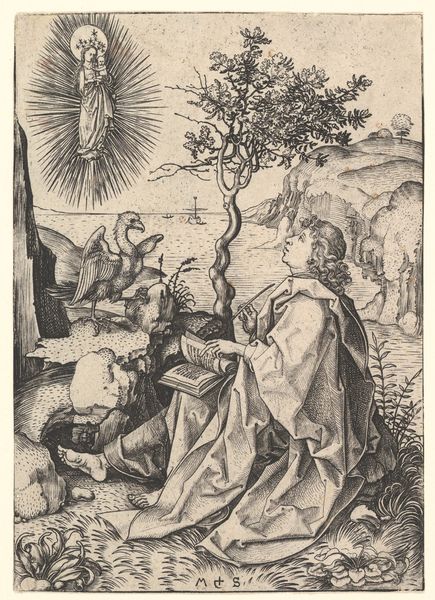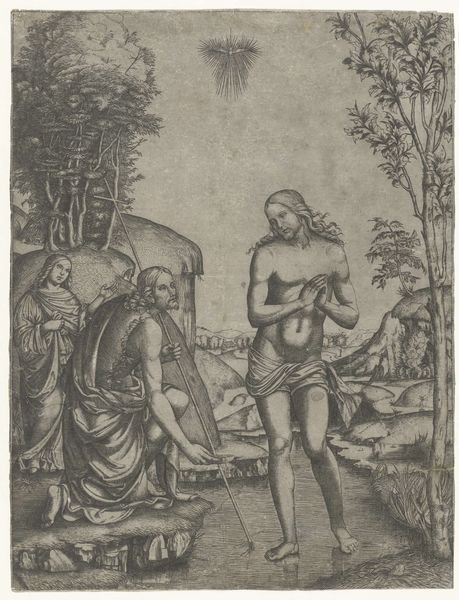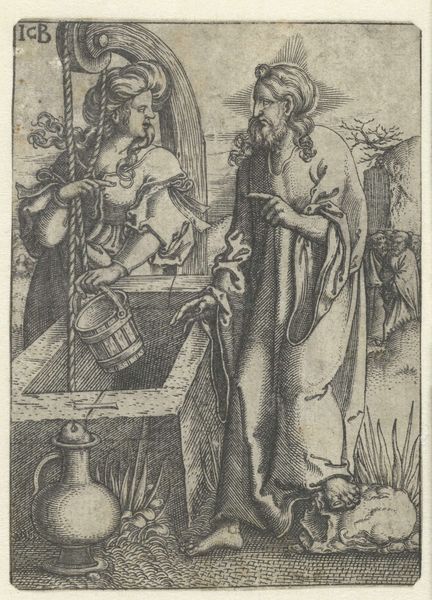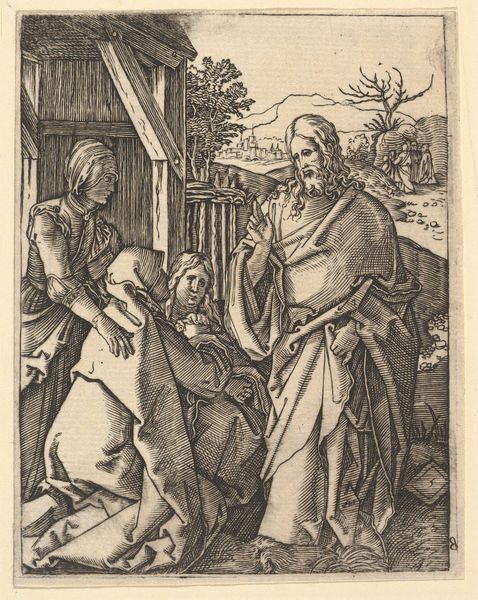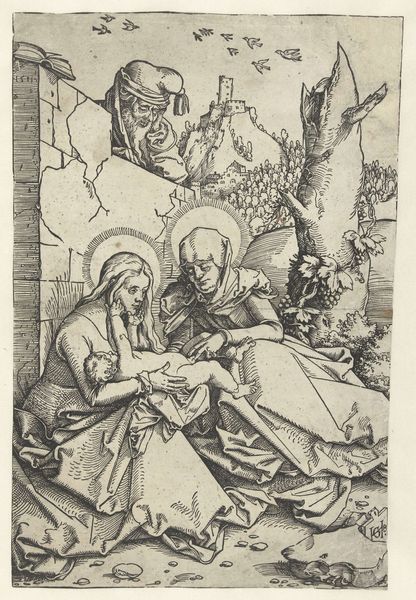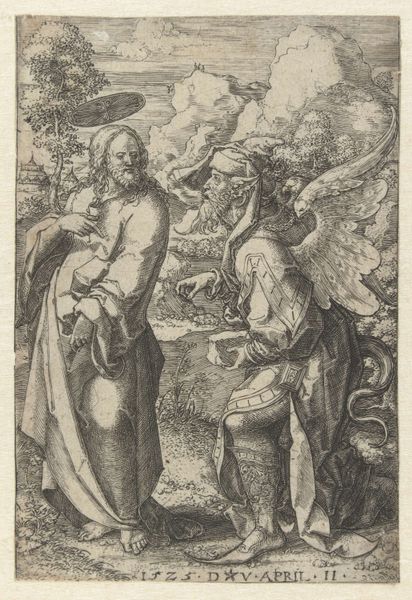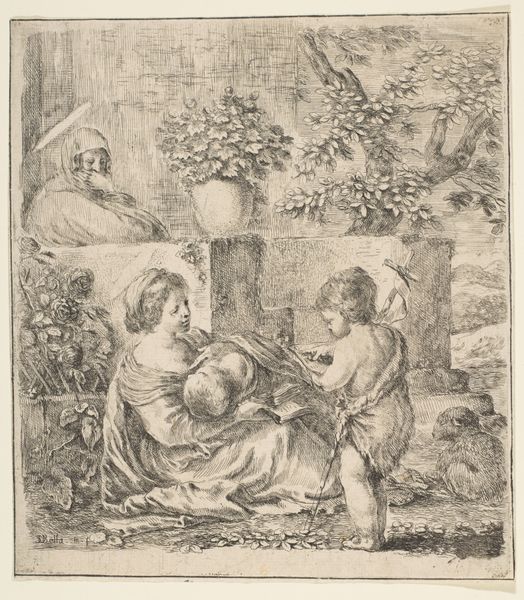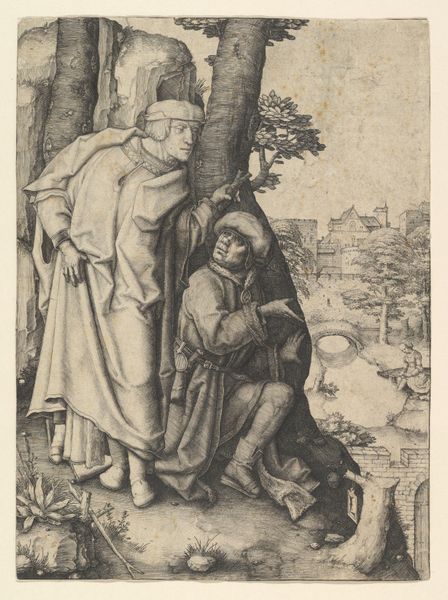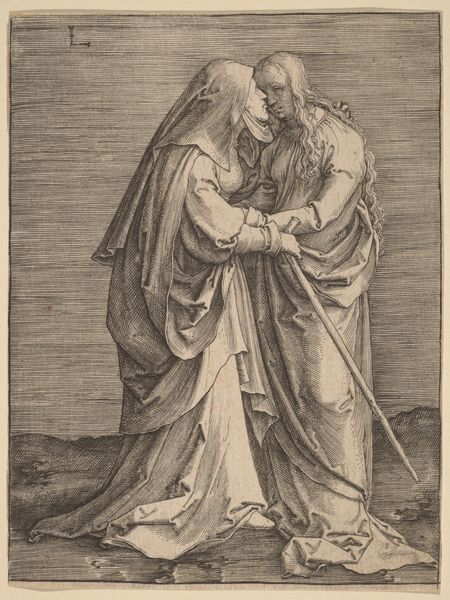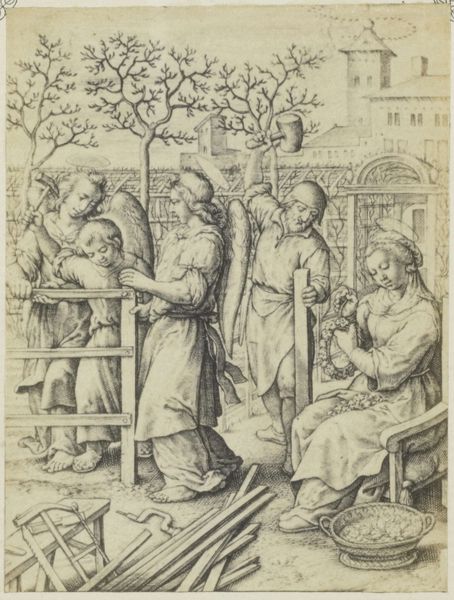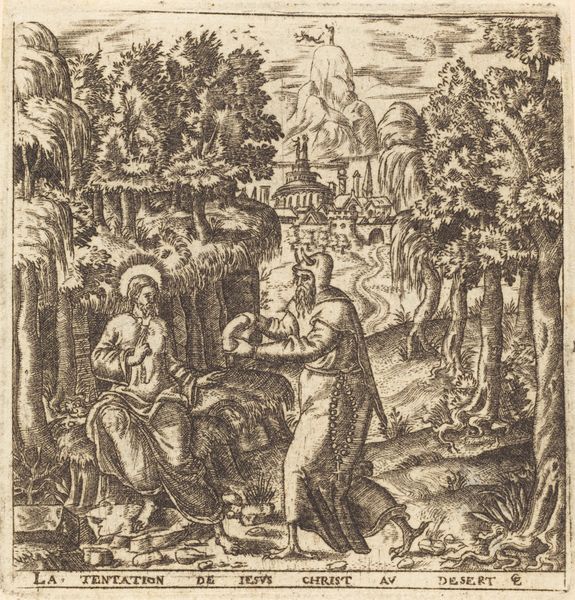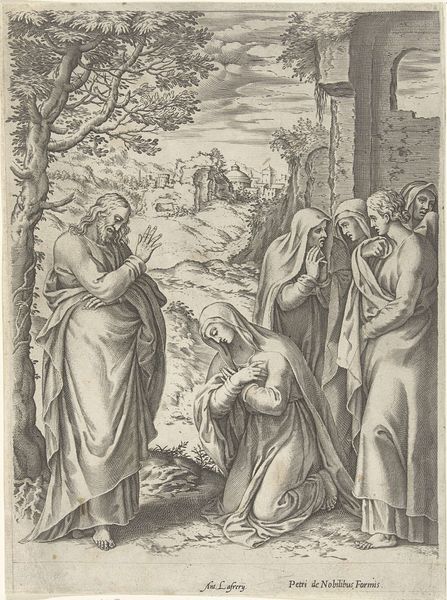
Christ Appearing to the Magdalen—Noli Me Tangere n.d.
0:00
0:00
drawing, print, paper, engraving
#
drawing
# print
#
figuration
#
paper
#
history-painting
#
northern-renaissance
#
engraving
Dimensions: 159 × 141 mm (image/plate); 161 × 145 (sheet)
Copyright: Public Domain
Curator: Ah, I am quite fond of this piece. What do you make of Martin Schongauer’s print, “Christ Appearing to the Magdalen—Noli Me Tangere"? It's undated, of course, but a jewel of the Northern Renaissance. Editor: Whoa, intense drama! The whole thing is so visually striking, almost like a stage play frozen in time. The raw emotion—despair, astonishment, maybe even a touch of fear—it all leaps right out. What’s up with the awkward bare tree? It’s such a strange contrast. Curator: Yes, it is a striking representation of a pivotal moment in Christian theology, with a rich history in artistic representation. Schongauer masterfully captures Mary Magdalene’s encounter with the resurrected Christ, drawing heavily on traditional iconography, as a reminder of both physical and spiritual rebirth. Editor: Rebirth makes sense. Visually, there is a palpable sense of transformation happening here. Her robes have an almost liquid quality while that single tree feels skeletal, yearning for spring. Tell me more. What does "Noli me tangere" really signify here? Curator: In this biblical scene, Christ says, "Do not touch me," when Mary Magdalene recognizes him after his resurrection. This moment captures a profound shift from physical to spiritual connection, cautioning against clinging to the earthly form. Art historically, Schongauer made this work during the period of dissemination of the bible; visual works served to democratize understanding and engagement. Editor: Fascinating. Looking at it, that little ointment jar next to her feels like such an intimate, human detail amid this grand, religious narrative. But, I get it now...It’s a reminder to focus beyond the here and now! It’s interesting to consider art's role in making sacred stories relatable for the people, almost like turning them into community theater for everyone to engage with. Curator: Precisely! It's also compelling to note how printmaking allowed for a wider distribution of such imagery, thus expanding and changing the way the common person viewed religious imagery. Editor: Yes, it certainly highlights art as a tool for teaching faith. After learning this I almost feel I've had a glimpse into an intimate moment made universally accessible—quite the artistic feat if you ask me. Curator: I wholeheartedly concur. The blending of spiritual symbolism with tangible human experience ensures its continued relevance and admiration.
Comments
No comments
Be the first to comment and join the conversation on the ultimate creative platform.

